New Tech, Services Keep up with Paving Trends
BY Sandy Lender
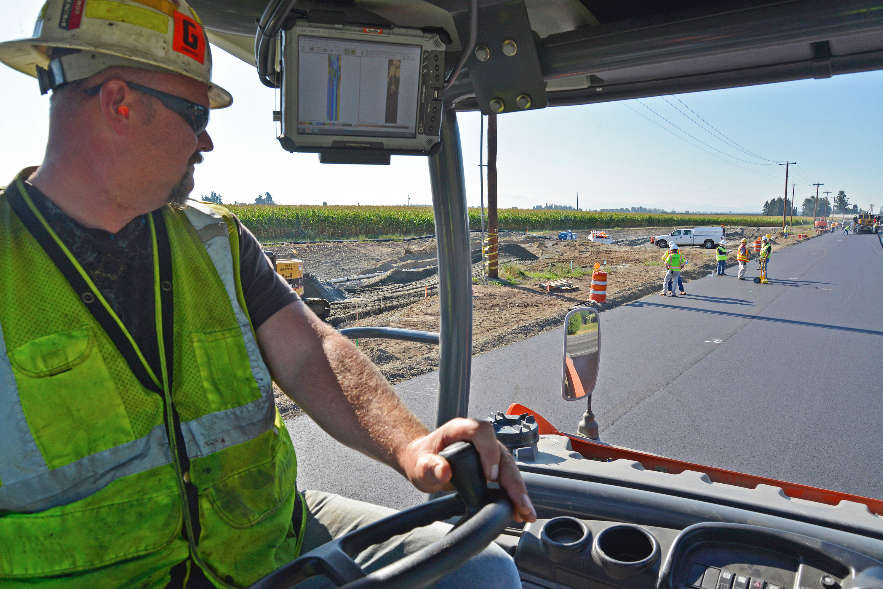
As mentioned earlier in this issue, it feels as though World of Asphalt 2016 (WOA) took place ages ago. Yet we have continued uses, of course, for the innovations that were launched at that trade show and in the months following the show. The big topic the past few years has been the slow march toward Tier 4 Final compliance with engines, and a host of equipment has achieved that goal. Another trend gaining clarity is that of intelligent compaction for both soil and pavement. Let’s dive into the offerings.
Fancier Pavers with Tier 4 Final
The Volvo Group, headquartered in Göteborg, Sweden, launched two new asphalt pavers during WOA. The P7110B and P7170B will be produced in Shippensburg, Pa., and will be available starting in the third quarter of this year. They’re highway-class pavers with Volvo D8J, 8-liter, Tier 4 Final engines with continuous passive regeneration to allow more than 12 hours of continuous run time. They feature the industry’s longest hydraulic tunnels, according to the manufacturer, a range of screed options, a four-sensor material flow system and 360-degree visibility for the operator.
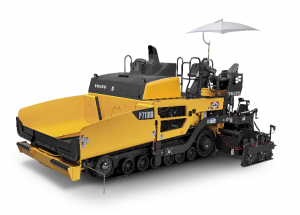
The Volvo P7110B tracked paver made its North American debut at World of Asphalt and will be available Q3 this year. It features a Tier 4 Final engine.
While safety and visibility are key for any paving crew, the innovation of engine efficiency has been on everyone’s mind for years, and John Mooney, product manager for pavers, stated: “The P7110B and P7170B build upon more than 75 years of Blaw-Knox and ABG paving technologies combined with the proven Tier 4 Final Volvo engine. Engine development is a core strength for Volvo that we leverage across the entire Volvo Group, and the D8J is another great example of improving performance while also complying with EPA regulation. The 7000 Series pavers were field-tested with more than 200,000 tons of placed material to prove performance and reliability. Not only did we prove reliability, we lowered the fuel usage, per placed ton, as compared to any previous model.”
Another nifty item OEMs are paying attention to is making maintenance easier for customers. The Volvo “green” key provides common access to ignition, heat box, fuel cap, center console, and DEF tank cover, and a second key opens the four side access covers, cooler, hydraulic pumps, and the smaller hinged panels located on the side under the operator seats. The B-Series pavers are also available with optional factory-installed CareTrack, which is the Volvo telematics system that provides remote monitoring of paver location and engine run time, as well as geo-fencing and reporting to increase uptime and better plan paver hauling and service.
Means of Compaction
The Transtec Group, Austin, consultant to the Federal Highway Administration (FHWA), describes intelligent compaction (IC) as “compaction of road materials using modern vibratory rollers equipped with an integrated measurement system, an onboard computer reporting system, global positioning system (GPS) based mapping, and optional feedback control.” With the Hamm Compaction Quality (HCQ) Navigator, Hamm was one of the first manufacturers to launch a compaction measurement and documentation system. Because we’re looking at what’s new, Tim Kowalski, Hamm applications support manager shared, “HCQ Premium is the latest intelligent compaction system from Hamm. We have upgraded the system to provide pre-installation kits for any soil or HD+ Hamm roller, if not already factory-equipped.”
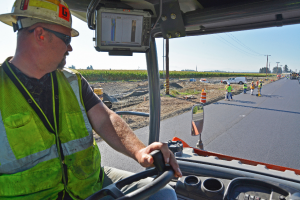
At the core of the Hamm IC system is the HCQ GPS Navigator, a touch-screen PC with USB interface, which provides processing power as well as a monitor and data storage facilities.
At the core of the application is a panel touch-screen PC with USB interface. This computer provides processing power as well as a monitor and data storage facilities. It is based on military standards, has a fully enclosed metal case, and is protected against water and vibrations. The HCQ Indicator measures the stiffness of asphalt or soil beneath the drum, and consists of an accelerometer mounted on the drum framework inside the rubber buffers, a processor and a display. With the accelerometer mounted this way, users get the actual reaction of the drum against the material it is trying to compact. Based on these data, the processor calculates the HMV (Hamm measurement value)—indicating the degree of compaction as a stiffness measurement derived from the measured signals—and displays this value to the driver in the cab.
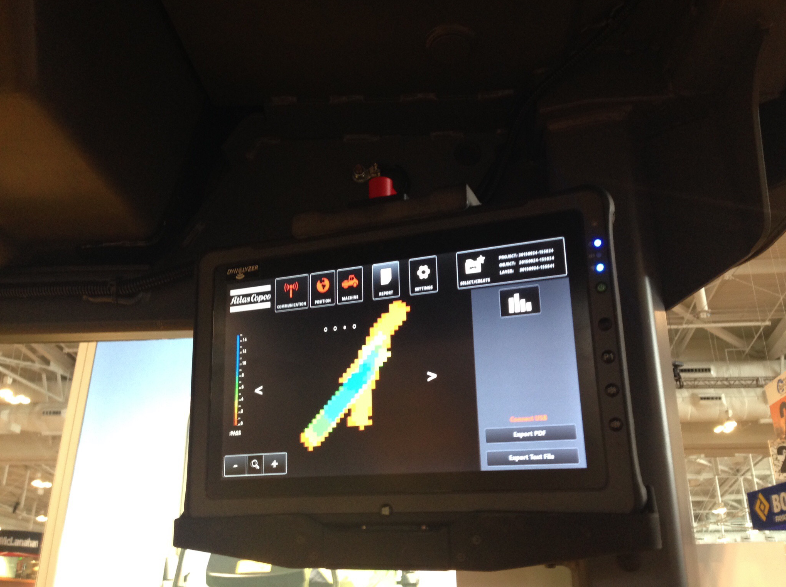
The Atlas Copco Dyn@Lyzer intelligent compaction system is available on CC2200 through CC6200 asphalt rollers. It simplifies compaction by using the program’s real time data to alert the operator when the required material stiffness is reached.
Atlas Copco featured its Dyn@Lyzer IC system on the CC6200 asphalt roller during WOA. Dyn@Lyzer uses a global navigation satellite system, such as GPS, to track the number of completed passes and the precise position of the roller at all times. The unit’s drum-mounted accelerometer measures the surface’s relative material stiffness and uses Evib readings to give operators immediate material stiffness results from within the cab and help minimize the number of passes. When using Dyn@Lyzer on asphalt the system uses two temperature sensors, one at each end of the roller, to register the surface temperature of the asphalt, giving operators consistent, relative stiffness readings. In addition, Atlas Copco’s IC system helps contractors detect any loose materials so they can perform additional passes to reach the right compaction. This minimizes the risk of production related quality defects.
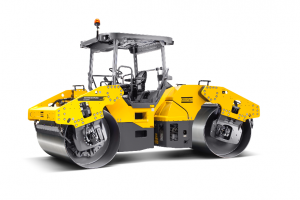
AtlasCopco CC6200
Contractors can use the intuitive system on a tablet to set project parameters and view compaction data. Once they achieve the optimal level of compaction, the program alerts the operator, so he or she can stop and reduce the risk of over compaction. The data storage also means contractors have the results readily available to print off or display for state or other inspections. Dyn@Lyzer is available on Atlas Copco CC2200 through CC6200 asphalt rollers and CA2500 through CA6500 soil rollers. For additional convenience, contractors can get free on-site training from an Atlas Copco representative or dealer.
Getting the base compacted is important, too. Atlas Copco launched its new CA1400 soil roller at The Rental Show in Atlanta in early March. “Rental centers look for equipment that is versatile and easy to maintain, and contractors want productivity,” Tim Hoffman, Atlas Copco rollers product manager, said. “We designed the CA1400 with those features in mind.”
The CA1400’s 66-inch-wide drum and two amplitudes — .032 inches and .067 inches — allow rental centers to offer contractors one unit for compacting a wide range of materials. Using the adjustable settings, operators can change the amplitude to suit different lift thicknesses. In addition to two amplitudes, operators can set the speed on the CA1400 to high or low to achieve different compaction results on a variety of applications and materials.
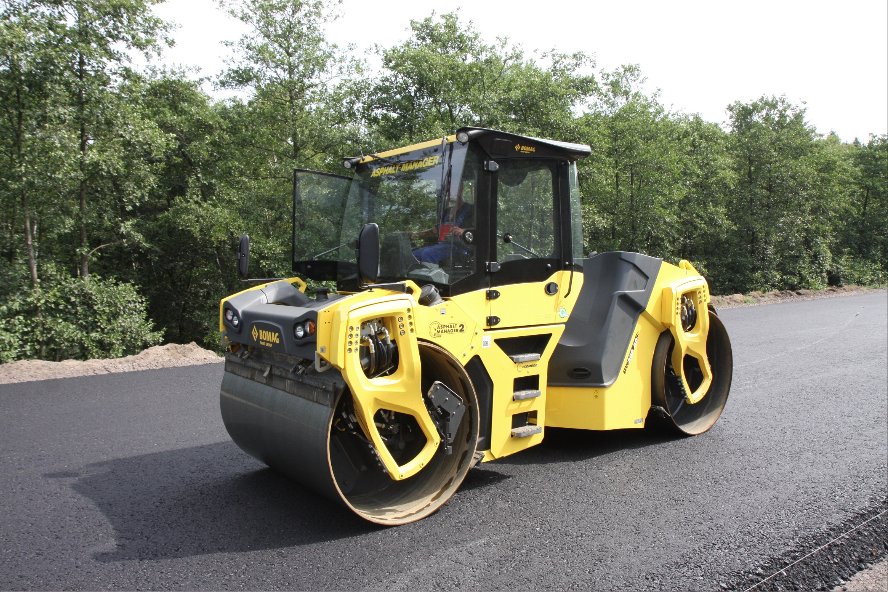
The new highway class BW206AD-5 from BOMAG is designed to put more impact surface area in contact with the asphalt.
In the category of compaction, several companies displayed new rollers during World of Asphalt in Nashville, including BOMAG Americas, Ridgeway, S.C. The new highway class BOMAG BW206AD-5 tandem vibratory roller boasts a larger, 55.1-inch drum diameter than previous models to deliver a smoother finish and improve mat quality. Its large drum diameter puts more impact surface area in contact with the asphalt to help prevent mat pushing and shoving and eliminate the potential for bow waves in front of the drum, even when working at higher speeds on tender mats.
The “leg design” BW206AD-5 roller extends the length between the drums, while reducing overall machine length compared to the perimeter frame roller it replaces in the BOMAG line, allowing operators to work more easily in confined areas. The vibratory roller also offers 66 percent higher curb clearance, increasing flexibility when compacting around obstructions. The roller’s available crab walk steering mode offsets the front and rear drums by up to 6.7 inches to the left or right, allowing the BW206AD-5 to compact right up to structures.
It offers two vibration frequencies and amplitudes, increasing flexibility in matching compaction output to the application. Low frequency and amplitude of 3,000 vpm and 0.031 inches respectively deliver maximum compaction output of 39,116 pounds. The roller’s high 4,200 vpm frequency delivers more drum impacts per inch when rolling at higher speeds than the previous model to improve surface smoothness.
The new roller can be equipped with BOMAG’s exclusive ECONOMIZER compaction measurement system that delivers real-time compaction progress to the operator’s console. With ECONOMIZER, the operator knows when material stiffness is optimized, which eliminates unnecessary passes. More importantly, ECONOMIZER allows the operator to identify and correct “soft” spots in the mat, and it prevents over mat compaction and aggregate fracturing.
Powered by a fuel efficient, 140-hp diesel engine using a combination of EGR and SCR emissions reduction technology, the BW206AD-5 tandem roller meets stringent Tier 4 Final standards.
Exclusive ECOMODE operation allows the new BOMAG BW205AD-5 tandem vibratory roller to offer 8 percent higher engine horsepower than the roller it replaces, while significantly saving on fuel consumption. When set to ECOMODE operation, the engine reacts to low load situations and automatically de-rates engine output to match need, and it automatically shuts off the engine after a pre-assigned period of idle time. With BOMAG’s ECOMODE operation, the roller delivers up to 30 percent fuel savings over full power mode and offers quieter machine operation to boost comfort.
Designed with the service technician in mind, this new BOMAG roller minimizes maintenance to maximize machine uptime. A no grease zerk design eliminates the need for daily lubrication, and all maintenance points can be easily reached from ground level. A departure from typical “leg design” rollers, the engine compartment is located on the rear frame, offering unobstructed access to service components.
Two independent pumps operate the interval-timed and pressurized water spray system that extends operating time required between refilling the polyurethane water tanks. Visible to the operator from a seated position, the system’s spray bar and nozzles are wind-protected to ensure uniform coverage, while a quick disconnect nozzle design helps to quickly clear plugging. Two spring-loaded flexible polyurethane scrapers per drum evenly distribute water across the drum and keep the drum clean.
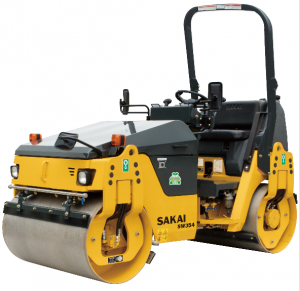
The new ECO compaction mode of the Sakai rollers is designed to reduce fuel consumption by up to 35 percent while maintaining consistent compaction performance.
Sakai America Inc., Adairsville, Ga., also brought new compaction equipment to WOA, focusing on asphalt paving of moderate-sized jobs right up to the curb with the EPA Tier 4 Final update of its 300 and 502 series rollers. Sakai also introduced its new tandem-drum SW354 and combination-type TW354 vibratory rollers. The Sakai SW354 and TW354 offer greater operational flexibility, ease of use and commonality of parts. None of the new units require diesel particulate filters (DPF) or regen for their 24-hp Kubota-Clean Diesel Solution engines.
Sakai’s new ECO compaction mode reduces fuel consumption by up to 35 percent while maintaining consistent compaction performance, according to the manufacturer.
Dynamic linear pressure of the 354-series’ 47-inch-wide, 27-inch-diameter drums is rated at 205 pounds per inch. Other compaction performance factors include centrifugal force of 6,530 pounds, amplitude of 0.012 inch and vibratory frequency of 4,000 vpm.
The new 354- and 504-series rollers are designed for easy maintenance, featuring a best-in-class sprinkler system with anti-clog package, triple-protection filtration and a plastic water tank with optimum drain characteristics that make for hassle-free winterization. Oil bath lubrication provides low-maintenance drum vibrator protection.
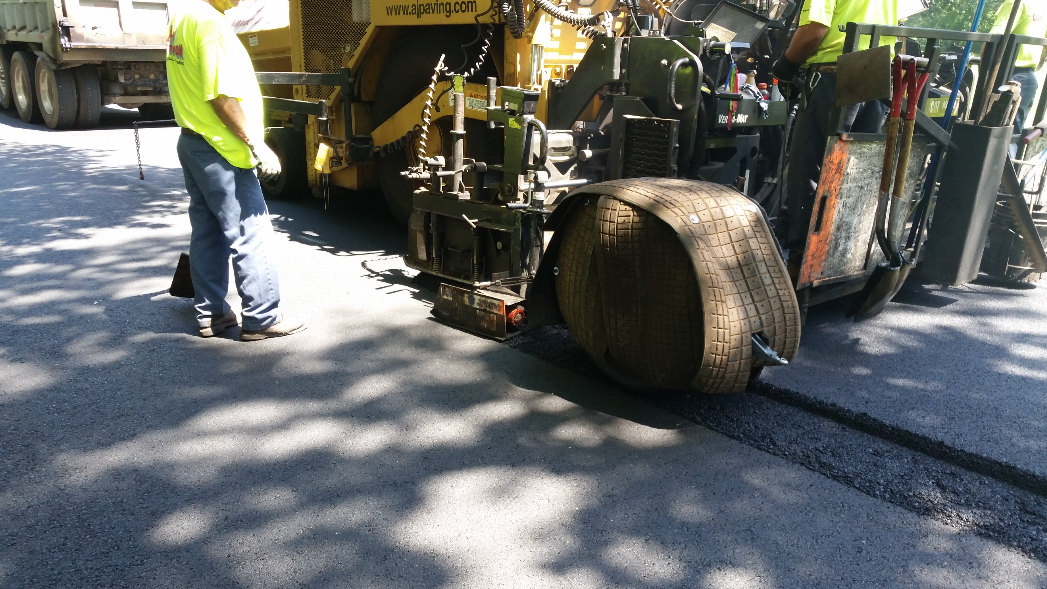
The notch wedge pneumatic roller from Willow Designs includes a rigid tow arm to pull the ballasted wheel directly behind the company’s notch wedge joint building system.
The new notch wedge pneumatic roller from Willow Designs, East Berlin, Pa., also has lubrication built in. The operator presses the button to use the spray that lubricates the ballasted wheel of the roller. It’s a wide rubber tire roller designed to work in conjunction with the company’s notch wedge joint building system. It’s pulled by a rigid tow arm directly behind the joint maker. Its lateral steering adjustment lets the operator align the notch wedge roller with the notch wedge joint being produced by the paver.
Keep in mind, the product galleries in AsphaltPro are set up to feature the new elements and new equipment from OEMs. As you review the galleries each month, you’ll find the latest innovations in technology and service that manufacturers are using to keep you current with trends in the industry. You don’t have to wait for an international tradeshow to get new information if you’re reading this publication each month.
